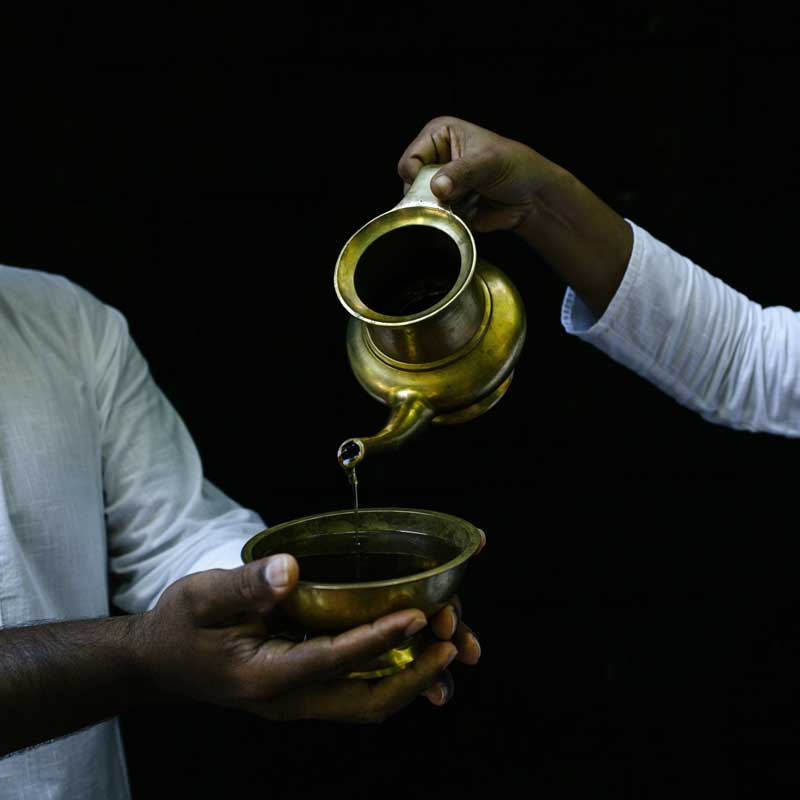Facts about Ayurveda
What is Ayurveda?
Ayurveda – The Science of Life – is the time-tested, natural, prevention-oriented, and holistic health care system of ancient India.
Ayurveda is recognized by the World Health Organization (WHO) as the world’s oldest comprehensive healthcare system and is indigenous to India where it is widely practiced. It is free of negative side effects and offers economical solutions to the major current health problems worldwide.
Ayurveda advocates that living in harmony with nature and maintaining harmony between body, mind, and spirit contributes to a long and healthy life. Any imbalance in this harmony results in disease. The focus of Ayurveda is on preventive and curative aspects.
Everything in the universe is composed of the five elements: space; air; fire; water and earth. These can be condensed into the three bio energies of space and air – Vata; fire and a little water – Pitta and water and earth – Kapha. Every individual has a distinct balance of these doshas and our health depends on maintaining a healthy balance between all three energies.
The Ayurvedic way of life is tailored to each person’s unique constitution, taking into account individual needs for nutrition, exercise, personal hygiene, social interaction, and other lifestyle factors. The Ayurvedic healing approach to treatments is based on detox and herbal ingredients.
Is Ayurveda an evidence-based science?

The ancient wisdom of Ayurveda is based on time-tested theories proven by observation, trial and error, and experimentation. Research done at reputed Ayurvedic institutes is registered in the clinical trial registry which is the single platform for all fields of medic.
Clinical research is being published in recognized medical journals all over the world. Ayurveda has taken the help of modern research methodology to prove its efficacy. Pharmacognosy, pharmaceutical, and pharmacological studies are also being conducted along with clinical trials.
The Ayurvedic pharmacological companies in India are scrutinized closely to maintain the standards of their medicines and are awarded ‘good manufacturing practices’- certificates. They are also encouraged to conduct and register clinical trials.
Can Ayurvedic physicians be called physicians?
What training do they undergo?
Do they have equivalent Western medical knowledge?
The graduation degree of Ayurveda is called Bachelor of Ayurvedic Medicine and Surgery B.A.M.S. It consists of five and a half years of intense study of Ayurvedic and Western medical principles, including anatomy, physiology, pathology, clinical methodology, diagnostic methods, etc.
A Bachelor’s degree holder of Ayurveda is called a Doctor as he/she has to learn Western medicine and Ayurvedic medicine. Post-graduation in Ayurveda is a three-year course, and the degree awarded is MD with a wide range of more than 16 subjects like general medicine, surgery, ophthalmology, ENT, pediatrics, Panchakarma, etc. in which to specialize.
The government of India also offers Ph.D. courses in Ayurveda for Ayurvedic postgraduates.

How does an Ayurvedic physician diagnose?
Ayurveda is a very logical science based on basic scientific principles. The science of Ayurveda does not only depend upon the symptoms as related by the patient, but believes in a thorough examination to discover the root cause of the ailment in the patient.
According to Ayurveda, suppression of the disease is not the way to cure an ailment. A patient can only be said to have recovered from the disease if the root cause of the ailment is eliminated and the body of the patient starts functioning normally. Thus, instead of finding methods to suppress the symptoms, Ayurveda focuses on finding the reasons for the underlying symptoms.
To discover the root cause of a disease in Ayurveda, there are certain mandatory examinations that must be conducted. The examination of a patient is is referred to as rogi pariksha, the observation of the patient. During this threefold procedure, every possible causative aspect of the ailment in the patient is examined in the following stages:
Darsanam
Stage of inspection and observation. In this stage various factors such as age and other physical characteristics of the patient are thoroughly examined.
Sparsanam
The stage where the observation is done through the touch method. Palpation, Percussion, and Auscultation are three different techniques used.
Prasnam
Stage of questioning during which the patient is asked about his/her ailments and the symptoms that he/she is observing on a daily basis. It is done in order to synchronize the observation of the physician with those of the patient.
Dasavidha & Ashtasthana Pareeksha
Apart from this threefold examination, the patient is also subjected to further detailed examination in order to discover all the possible causative elements behind the ailment. The three steps are then elaborated in two ways Dasavidha Pareeksha (tenfold examination) and Ashtasthana Pareeksha (eightfold examination).
Tenfold Examination
- Structural and functional abnormalities of the body
- Geographical location
- Physical strength
- The season and climatic conditions
- The patient’s digestion
- The natural Tridoshic constitution of the body
- Age
- Psychological strength
- General and personal habits, e.g. smoking, work habits, daytime sleep, etc.
- Nature of food the patient prefers and resorts to
Apart from this, a physician may resort to Eightfold Examination
- Pulse
- Urine
- Faecal matter
- Tongue/taste
- Voice and speech of the patient
- Touch, skin and tactile sense
- Eyes and vision
- General build
An Ayurvedic physician can also resort to modern diagnostic methods as he/she is formally trained in them.
How can an Ayurvedic physician claim to cure a disease such as diabetes?
Ayurveda is very helpful in treating and managing many lifestyle diseases such as diabetes, obesity, hypertension, etc. even though in western medicine there is no definite cure for them.
Ayurveda advocates lifestyle changes and specific medications and treatments coupled with yoga to help reset the body’s biological rhythm.
Watch the following video to listen to how Guy Vachon had an incredible transformation after experiencing a 26-day Panchakarma. Upon arrival, he had a high dependency on insulin, more than 100 units per day. After undergoing some treatments and diet changes, his insulin dosage was down to 10-20 units, and his low-density lipids were halved. He also lost 12 kilos in the process.
Is the detox procedure a scientific technique?
Are there any articles published about the efficacy of Ayurvedic techniques in peer review journals?
The Panchakarma detox procedure is very much a scientific technique. Lots of research is carried out on the mode of action and effects of Panchakarma on various diseases and is published in reputed indexed journals. Below are some links:

